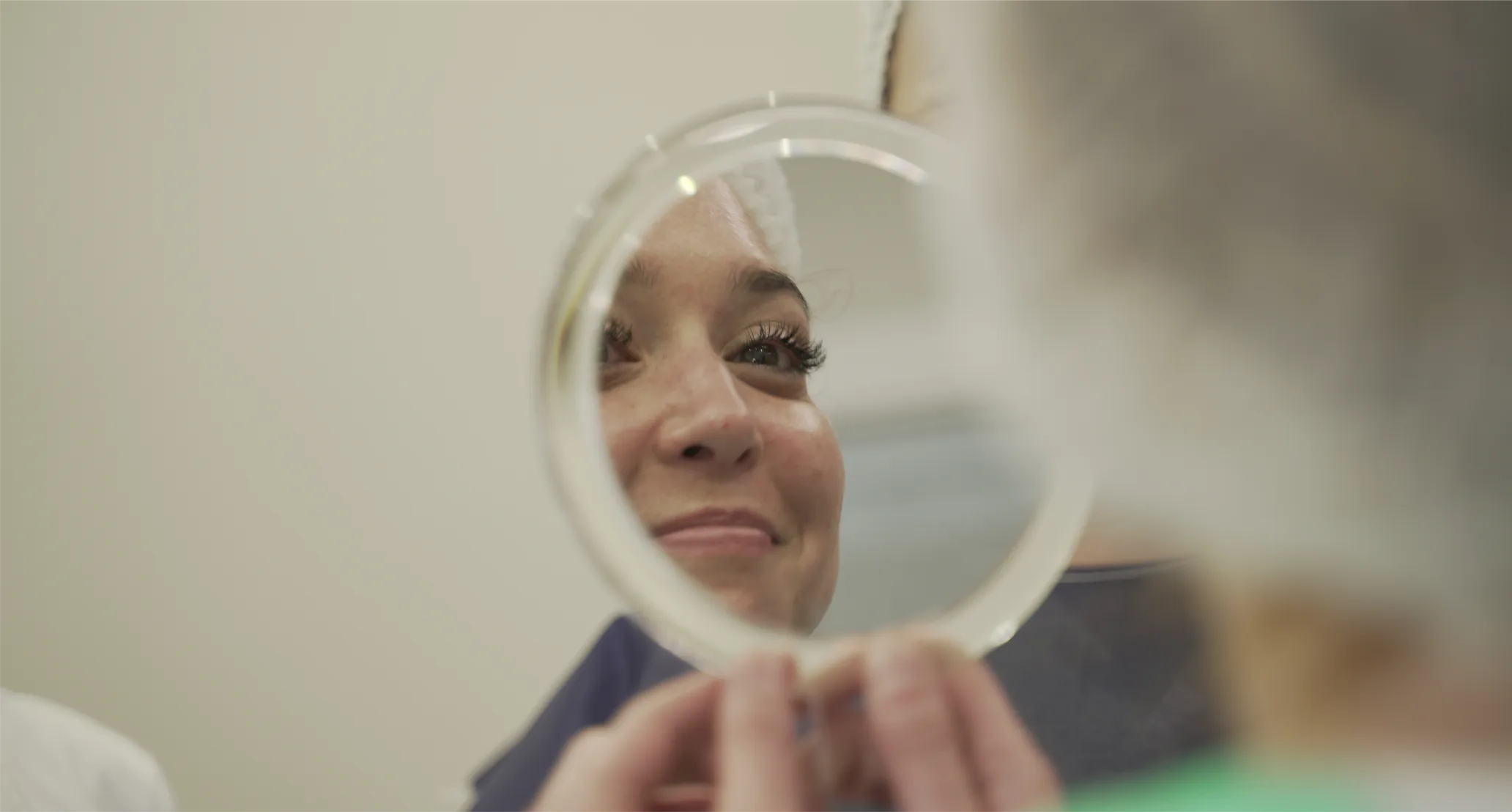
Reading time: 7 minutes
Minimal retouching but involving very significant changes. And what all patients ask for: to look natural, as natural as possible. “They are subtle changes and nobody notices, but at the same time they achieve such a positive effect that other people notice something different and comment on it, with phrases like ‘but how good you look, the truth is that you have a better face’,” says aesthetic doctor Lisandro Farollch about rhinomodelling, a procedure that has a high rate of satisfaction and with which very good results are achieved, without having to go under the knife.
“What we basically try to do is make subtle changes at three points: the root of the nose, which is right there between the eyebrows. We also lift the tip a little bit and then we improve the angle between the nose and the lip by opening it slightly, because often when the nose is very droopy is when we have that narrower angle,” explains Farollch, who is part of Eimec’s teaching team. These are subtle changes that are difficult to perceive, but they make the patient feel much better, and they even comment on it”.

Dr. Lisandro Farollch in a personalised rhinoplasty training.
Aesthetic canons change with the passing of time, and the premises that ruled in the 1990s are not the same as those that dominate the practice today. “Knowledge, techniques and procedures have evolved a lot. Before, proportions and harmony were not taken into account. There was no individual look of the patient, because all lips were made the same and all noses were made the same. In the 1990s, the nose was very small, very upturned and it didn’t matter whether you had a large or thin face, a wider jaw, small eyes or large lips. The model for rhinoplasties was repeated in series, so sometimes it coincided with the proportions of the rest of the face, but most of the time it was disproportionate, so it was a rhinoplasty that everyone noticed”.
Now, says the expert, hyper-small, upturned noses are being avoided, and the trend is towards straighter partitions with a slight elevation of the tip. “But always very subtle, as we prefer a nose that is more in keeping with the rest of the face, harmonious as a whole. That is precisely why we avoid those hyper small, hyper upturned noses, which really represent more the nose of a child than of an adult”.
When it comes to the number of patients who come to the practice interested in rhinoplasty, the percentages between women and men are 70 and 30 percent respectively. “Twenty years ago, when I started in aesthetic medicine, women accounted for 95 percent. The proportion of men has been growing very slowly but steadily,” says Farollch.
Aesthetic medicine has long ceased to be stigmatising, where – as Farollch says – a person who had undergone a treatment, whether it was simply a cosmetic touch-up or more complex surgery, was looked down upon with a sidelong glance. Now, by contrast, minimally invasive procedures dominate. “Small improvements that men and women accept as something more natural; we simply improve, it is not a question of changing radically,” says the specialist.

Dr. Zainela Laborde, director of EIMEC, performing a rhinoplasty.
Unlike cosmetic surgery, recovery after rhinoplasty is almost immediate. It is, Farollch insists, a safe, quick procedure with a high satisfaction rate. “You get a nose job, go out and go to work, go to dinner or lunch with friends without any problems. In contrast, rhinoplasty takes a different time. There is a recovery period afterwards, the postoperative period, which tends to be a bit uncomfortable and somewhat painful. You get bruised and you have to keep explaining yourself. The truth is that, thanks to this practice, many surgeries have been saved“.
Rhinomodelling as such, says Farollch, began to be implemented some 15 to 20 years ago. “It’s been almost two decades since we started treating noses in this way, but it really took off about five years ago, maybe a little bit more. I think social media also did its job, with a big spread that caught the attention of younger people. That’s why we’re getting more and more enquiries from 16, 17 and 18 years old onwards. Almost a decade ago, only older people were consulting, with the main objective of treating the signs of ageing.
Although the complication rate associated with this technique is low, complications can arise, as with any medical, cosmetic or surgical procedure. “The nose is a rather complicated area because it has a terminal circulation. It is precisely in this area where all the circulation of the face ends, of the branches that go to the nose,” the specialist emphasises. And it is a fine, ball-shaped circulation. Therefore, there may be compressions with necrosis or depressed areas due to previous necrosis. In addition, unfortunately, malpractice as a result of incorrect procedures and unsightly results,” he concludes.
According to industry data, the application of injectable fillers for aesthetic purposes is the second most performed non-invasive procedure after botulinum toxin infiltration. As a result, rhinoplasty with fillers has become an alternative to cosmetic nasal surgery, with benefits in terms of cost, risk, complications and recovery time.